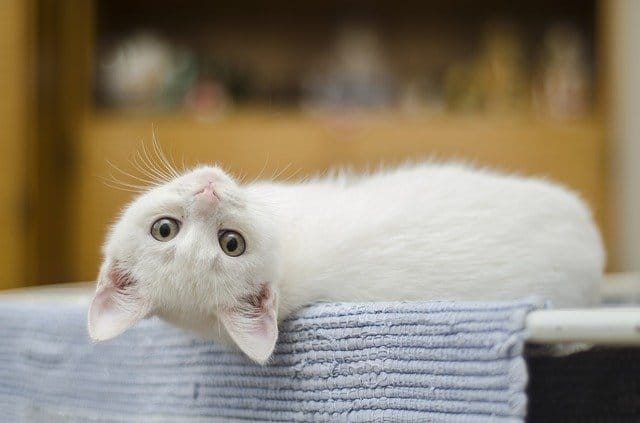
The secret language of cats goes much further than “meow.” Cats have their own methods of communicating that only a cat expert or cat owner can comprehend, including ear twitches and sluggish blinks.
Cats are fascinating creatures, and there is still a lot we don’t know about them. However, what we do know may help us determine when our cat is in distress or when it is happy.
The following guide will give you a better understanding of how to communicate with your four-legged feline friend, and help you decipher its behavior.
What do cats mean when they…
- Curl up in a ball
Cats may curl up in a ball when they are cold or scared.
- Leave their tails straight up?
When cats leave their tails totally straight it means they are happy, or at least content.
- Rub your legs
Cats rub against people to mark you as “theirs” with scent glands in their face and paws. However, this is also how they mark territory, so if your cat is rubbing against you after you go outside, it may be marking you as part of the outdoors.
- Rub against a door before going outside
Cats “preserve the scent” from their paws when they rub against objects. If your cat keeps asking to go out by rubbing up against the door, it means its paws smell like whatever is on the other side of that door.
- Roll around in grass or sand
Cats cover themselves in grass and sand when they are stressed. If your cat rolls around in the sand or grass, it’s probably uncomfortable for them.
- Yowl
It is said that cats meow to communicate with humans, but meowing isn’t the only sound they make. Cats often yowl when they are lonely, but sometimes can be a sign of stress too.
- The Slow Blink
Cat lovers spend a considerable amount of their time telling their cats they love them and waiting for them to respond with “I love you.”
The words may never actually leave their lips, but they do so in a unique manner. A slow blink is one of the many eye gestures made by cats. If your cat looks at you and slowly closes then opens its eyes, it means he loves and trusts you.
- Scratch things
Cats scratch objects as a way to mark their territory and express themselves. This is also normal behavior for kittens who are just learning to use their claws. If your cat scratches lots of different objects, try trimming its nails regularly.

- The Paw Press
Kittens and cats love to press their paws against your soft body parts. This can be soothing at times, but it can also be somewhat unpleasant.
When kittens are born, they pressure their mother’s breasts while she is feeding them. Experts believe that when cats are stressed or seeking comfort, or when they are peaceful, they mimic this behavior with their human counterparts.
- Lick you
In addition to tasting your food for them, cats will often lick people as a sign of affection. Although this behavior is common, it may also be a way of asking for food or attention.
You can tell which one it is by looking at the cat’s body language. If the cat seems calm and relaxed while licking, then it means they are showing you affection.
- Look at their tail
A cat’s tail is an important indicator of how it feels. When a cat is relaxed or happy, its tail will often be hanging down loosely with the end twitching slowly side to side.
However, when cats become frightened or aggressive, the hair on their back may stand up and their tails will puff out.
If a cat’s tail is lying flat against its body, this indicates that the kitty is startled or nervous about something.
- The Curious Sniff
Cats appear to spend a great deal of time sniffing whatever is going on around them. They are often very fond of stealing a whiff of their owners.
If your cat sniffs you, don’t be concerned, they’re just thanking you for being nice to them. When cats are confronted with strange people or an unfamiliar environment, they like to seek out your scent and take it in.
- The Grooming Groove
Cats spend a considerable amount of time grooming their coat because they need to remake the dried oils on their fur.
If your cat is spending hours licking or cleaning themselves, don’t panic; this is normal behavior for most cats.
When a cat licks its body with quick motions, it is removing any oils in its fur that could cause the colors in their coat to fade.
- The Slow Tail Wag
Cat tails are often quite expressive, revealing whether or not they are feeling calm, excited, nervous or aggressive.
A slow tail wag indicates your cat feels relaxed when approaching you. If your cat’s tail is moving slowly and wagging from side to side, it is probably a good idea to move on.
If your cat’s tail is moving quickly and stiffly, this usually means that they are feeling aggressive and territorial about the area they’re in.
If you own a cat, or if you are the owner of a cat, I hope these statistics pique your interest. You may already be aware of some of them, but there are so many fascinating things about cats.


GIPHY App Key not set. Please check settings